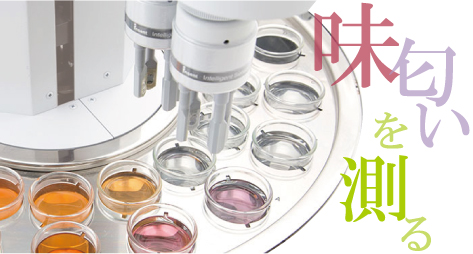Science and Technology of Taste and Odor

Course Overview
In this lecture, you will learn "what is taste and odor in gustatory and olfactory senses, respectively" as well as cutting-edge science and technology to quantify these senses. A patent comprising of a concept "to measure taste" along with a new machine "taste sensor to measure taste" was applied based on long years of research at Kyushu University in 1989. Nowadays, over 25 years later, this taste sensor, i.e., one of its kind and an advanced technology, is utilized in the worlds of food and pharmaceutical companies.
Development of a taste sensor enables us to get a scale of taste and to look at taste with our eyes in a way similar to the scales of length and weight. The taste sensor is used for development of new food products, like development of medicines which are not bitter and hence are easy for children to take, assurance of the quality of foods, stable supply, and marketing based on objective reasoning; its uses are expected to grow more and more worldwide.
Quantification of odor has also become possible recently. Here the term "quantification" means "to objectively evaluate the target using an average and standard scale". An electronic dog nose whose sensitivity is superior to dogs was developed by Kyushu University using both Surface Plasmon Resonance (SPR) and antigen-antibody interactions. This sensor is now utilized for research study at the Ministry of Defense in Japan. The lecture explains this odor sensor.
Physical sensors corresponding to the senses of sight and hearing have been developed and commercialized from long ago. They are, for example, cameras and microphones, respectively. The reason for their successful development is that these senses receive physical quantities such as light and sound, hence semiconductor materials to transform physical quantities to electric signals can be utilized as the transducers of sensors. On the other hand, the development of sensors corresponding to gustatory and olfactory senses have not been as easy. This is because researchers considered that quantification of senses felt by humans was impossible since they could not find materials adequate for transforming chemical substances into electric signals.
However, this situation has drastically changed recently.
Evaluation of palatability is getting possible using science and technology created in Japan. I would like to emphasize that Japan discovered the fifth taste "umami", "Washoku" traditional Japanese cuisine was also selected as Intangible Cultural Heritage, and furthermore the taste sensor was developed in Japan. Science and technology created in Japan will produce novel 21st century food culture in the world.
Course Objectives
1. To understand the difference between subjectivity and objectivity
2. To study the principle and application examples of taste sensor
3. To study the principle and application examples of odor sensors
4. To understand the difference and similarity between quantification of time and weight and that of taste and odor
5. To have an image of the future world where taste and odor are quantified
Course Plan
Week1: Science and technology to measure taste
The first week of this lecture introduces the science and technology to measure taste, i.e., a taste sensor.
Lesson1. What is taste?
Lesson2. Invention of taste sensor
Lesson3. Measure taste
Lesson4. Hybrid recipe
Lesson5. Look at taste using our eyes
Week2: Characteristics and application examples of taste sensor
The second week is devoted to the description of characteristics and application examples for a taste sensor.
Lesson1. Development of foods using taste sensor
Lesson2. Response to basic taste qualities
Lesson3. Global selectivity
Lesson4. Portable taste sensor
Lesson5. Taste sensor for education
Week3: Odor sensor and other topics
The third week is for development of an odor sensor and my motives for development of a taste sensor.
Lesson1. Visualization of odor
Lesson2. Electronic dog nose
Lesson3. Robot with odor sensor
Lesson4. Industry-academia-government collaboration, R&D TAOS
Lesson5. Unknown episode of development of taste sensor
Profile of Prof
| Kiyoshi Toko | |
|---|---|
 |
Dr. Toko is a Distinguished Professor of the Graduate School of Information Science and Electrical Engineering, Kyushu University, and was a Dean for 2008-2011. He is now a Director of Research and Development Center for Taste and Odor Sensing. He proposed a concept "to measure taste" about 30 years ago and succeeded in developing the taste sensor using lipid membranes, i.e. the electronic tongue. His research results are frequently on air in TV broadcast. |
Premise-type Knowledge
Nothing in particular(having knowedge of science at the level of junior high school)
EXAMS
- Three Weekly tests, multiple-choice questions, which count for 60 points in total.
- Final exam, multiple-choice questions, which counts for 40 points.
Completion requirements
- Taking the three Weekly tests, and the final exam.
- Achieving 60 points or above from the weekly tests and the final exam.
The due for the weekly tests and the final exam: October 21, 2016.
Issued date of the certificate: October 27, 2016.
Reference
K.Toko, Biochemical Sensors: Mimicking Gustatory and Olfactory Sense, (Pan Stanford Publishing, Singspore), ISBN978-9814267076

